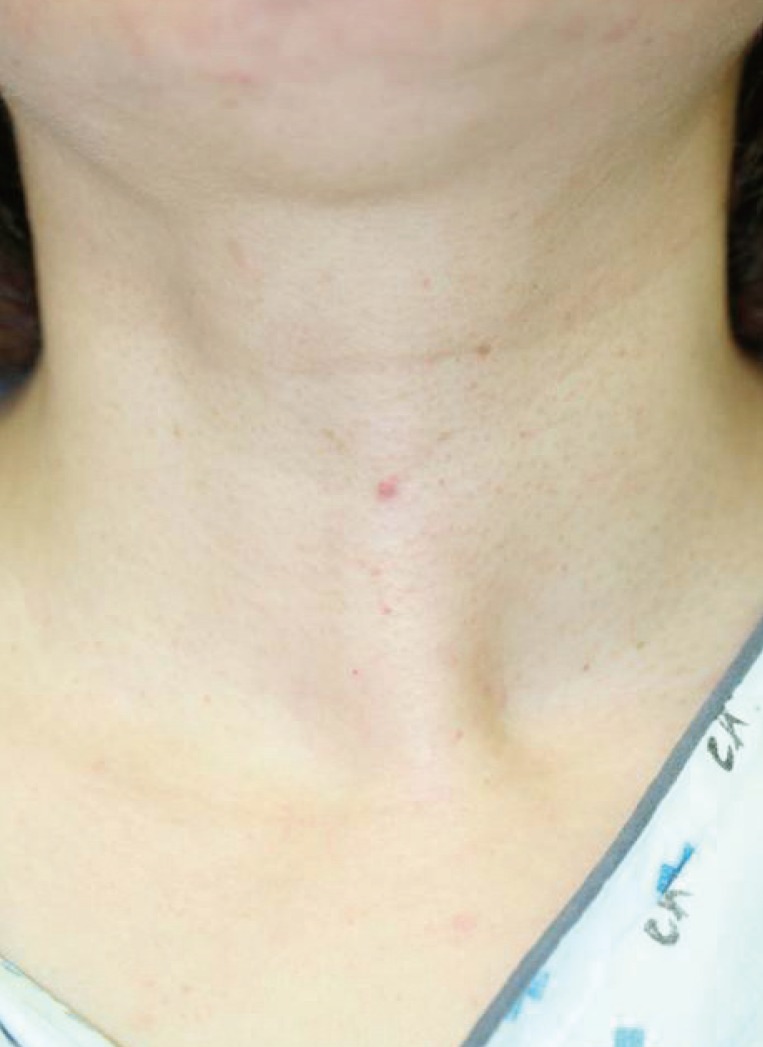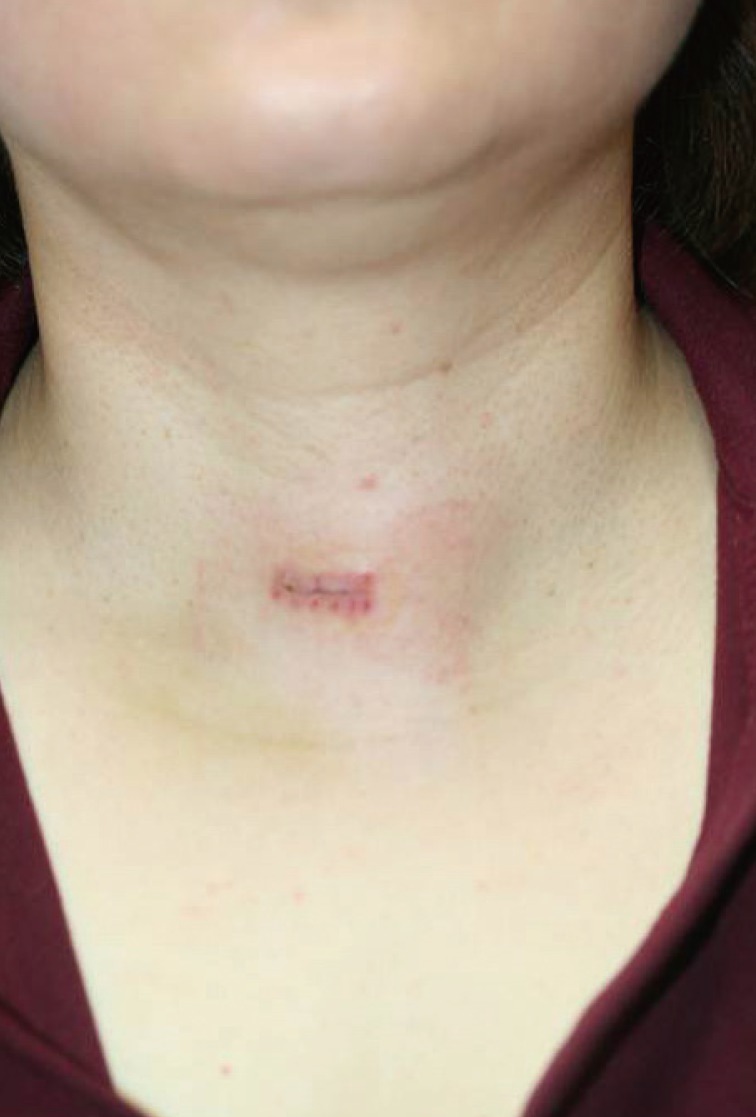Recently, robotic surgical operations have been performed in many surgical areas because the oncologic results are almost the same as conventional surgery but robotic surgery requires an incision of only a few centimeters to approach the surgical site [1]. Thus, many patients with thyroid cancer choose robotic surgery because of reduced scarring [2].
A 39-year-old female patient with thyroid cancer of the right lobe underwent robotic thyroidectomy via a bilateral axillo-breast approach, both axillary and mammillary [3]. After 7 months, she felt tightness in her chest and neck. She was diagnosed with major depressive disorder and panic disorder in relation to these symptoms. A band-like lesion appeared 1 year after thyroidectomy (Fig. 1). The chest and neck were connected with band-like scar tissue. During swallowing, the chest and neck moved simultaneously.
Tracheal and soft tissue involving the dermis layer had adhered from the neck to the chest along the left approach track. After removing the scar tissue, the adhered site was covered with deep cervical fascia and subcutaneous fat tissue using an anti-adhesive agent. After surgery, the band-like scar tissue disappeared and symptoms improved (Fig. 2).
This case involved a rare complication from a bilateral axillo-breast approach robotic thyroidectomy. Although robotic surgery has advantages in terms of scar appearance, it can also cause internal scarring under the surgical site. In this case, a scar formed beneath the skin layer. Approaches close to the skin may lead to band-like scar formation. Therefore, especially in dynamic areas like the neck and joint, surgeons should ensure that the surgical approach is not too shallow.





